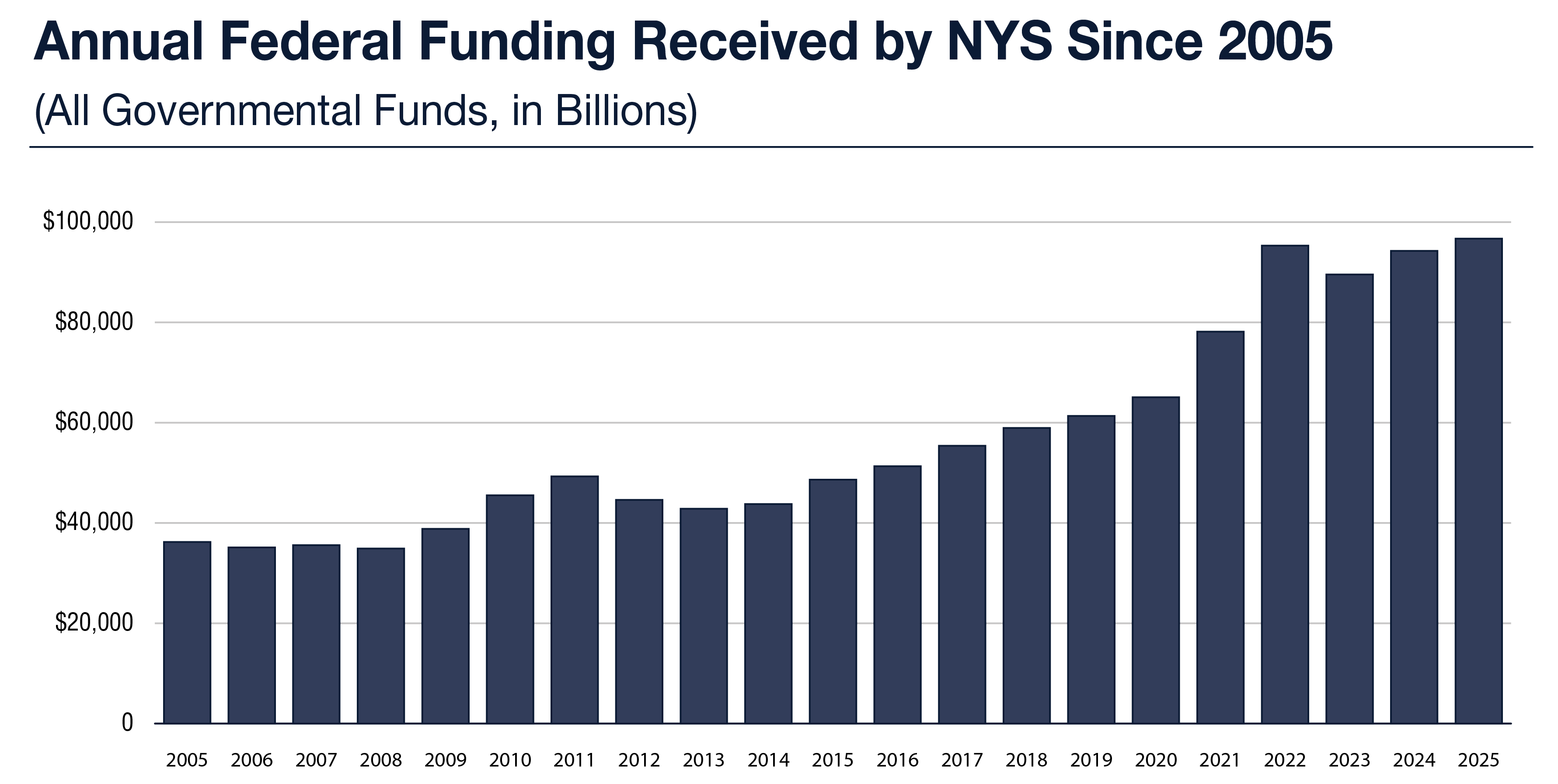OSC Issues Guide to Federal Funding in New York
Per the notice below, the Office of the New York State Comptroller (OSC) has issued a guide to the federal funding that New York State receives.
DiNapoli Releases Guide to Federal Funding in New York
A new online resource released by New York State Comptroller Thomas P. DiNapoli details the vast array of services that federal funding supports amid the continued uncertainty in Washington over potential cuts for states, including funds for Medicaid and other health programs, education, social welfare, transportation, public protection, environment and other vital programs.
“Actions taken in Washington to cut health care, food assistance, infrastructure and other critical programs will harm New Yorkers,” DiNapoli said. “Major cuts will reduce the services the state provides that simply cannot be replaced by state taxpayers. Understanding how New Yorkers are served by federal dollars will be essential in seeing how future changes to federal spending will impact our residents and communities."
DiNapoli’s guide presents federal revenues in the state budget and federal support of the state’s safety net programs, which help New Yorkers from their youngest years in childcare and K-12 education through their senior years with Social Security benefits. In addition, the new tool provides spending by major funding streams and functions, including grants for various Medicaid programs, clean water, and children’s health insurance programs. It also includes a county-by-county breakdown in enrollment and benefits for programs like Medicaid, Social Security, housing assistance, and the Supplemental Nutrition Program for Women, Infants and Children. Insights include:
- The state received $96.7 billion in federal dollars in state fiscal year (SFY) 2025, representing more than 38% of the $249 billion in revenue received by New York in that fiscal year.
- Nearly 3 million New Yorkers rely on the Supplemental Nutrition Assistance Program (SNAP), the nation’s largest food assistance program.
- Nearly 9,000 (4.7%) members of the state’s workforce are backed by federal funding, with the share significantly higher in some agencies, such as 83% at the Department of Labor.
- Over 3.7 million New York residents received Social Security benefits in 2023.
- Over 150,000 children received childcare assistance funded primarily by the federal government.
- More than one-third of residents are on Medicaid in eight counties: Bronx, Chemung, Kings, Montgomery, Queens, Richmond, Rockland, and Sullivan.

DiNapoli has released multiple reports this year highlighting the relationship between the state and the federal government, including his annual balance of payments report, and analysis of the 2017 Tax Cuts and Jobs Act. The online guide will be expanded with additional analysis and reports as federal actions become more concrete.
Online Tool
Other Resources
New York’s Balance of Payments in the Federal Budget
Series of Briefs Tracking New York City Federal Funding

